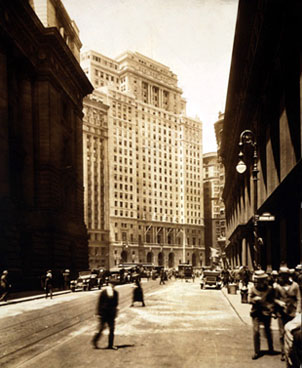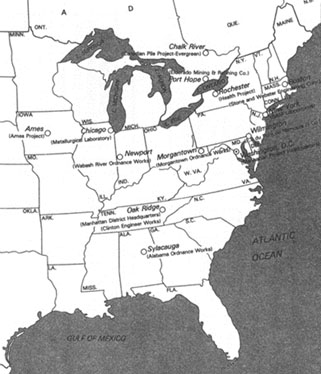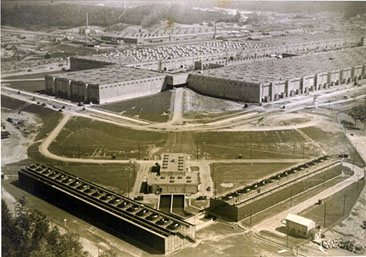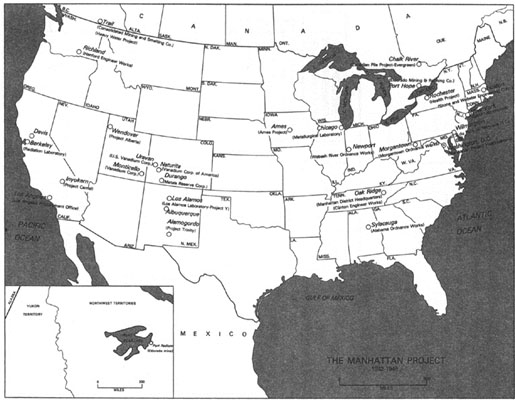The Corps of Engineers organizational structure was used to hide the development of the atomic bomb in World War II
Since the late 19th century, the U.S. Army Corps of Engineers has organized itself into geographic divisions and districts to carry out its work. It is a flexible structure, with Corps districts and divisions created, reorganized, and eliminated as responsibilities and needs change. The Corps created a unique district in the midst of World War II to help camouflage the most secret of efforts - the building of the atomic bomb. The Manhattan District, established on 16 August 1942, was meant to appear to outsiders as simply another Corps of Engineers district, created in the midst of a war in which the Corps, and the entire country, had been mobilized to defeat Japan, Germany, and Italy. One would have assumed that the Manhattan District handled Corps work in the New York City region. In reality, the Manhattan District had no geographical boundaries, and Corps planners knew from the beginning that the work of producing the atomic bomb would take place elsewhere.
 |
|
 Manhattan Opened-1.jpg?ver=9iKLKxZnGKK7DHmK1HmUXA%3d%3d) |
| Cunard Building, New York City |
|
General Orders establishing the Manhattan District |
Activity at the three primary Manhattan Project sites - Oak Ridge, Tennessee; Hanford, Washington; and Los Alamos, New Mexico - accounted for the bulk of the development and assembly work for the bomb, though important work took place in many places around the country. However, Manhattan was the location of key early work, including the organization of the Manhattan Project. The project office was at 270 Broadway, which was also then the location of the Corps' North Atlantic Division. There were additional offices in the Woolworth Building at 233 Broadway. A front company established to purchase uranium secretly for the project was also in the Woolworth Building. At these two addresses, employees conducted much of the early research, performed administrative duties, and procured materials for the Manhattan Project. The first batch of uranium ore purchased by the Corps was actually stored in Manhattan, as well as on Staten Island. The Manhattan District purchased the ore, mined in the Belgian Congo, from the Union Minière Company, which had an office at 25 Broadway in the Cunard Building.
Columbia University, on the northwest end of Manhattan Island, also played a part in the efforts of the Manhattan Project. Scientists in the physics department, before and during the war, conducted experiments that helped unlock the secrets of practical nuclear fission. Even as some of Columbia's scientists left the university to work on the Manhattan Project, research continued throughout the war. Though the Manhattan District office in New York remained open until the end of the war, the Manhattan Project headquarters moved to Oak Ridge in August 1943, and Brigadier General Leslie Groves, appointed to command the Manhattan Project in 1942, established his office in Washington, DC.

Map of Manhattan Project Sites
The original proposed code name of the Manhattan Project was "Laboratory for the Development of Substitute Materials." Instead, the Corps established the Manhattan District as camouflage, though it was not just a name. Much of the early work leading to the development of the atomic bomb occurred in Manhattan. While the name "Manhattan District" does not evoke the sense of exotic intrigue that an unusual code word or phrase might, it helped to keep secret one of the most important scientific developments of the twentieth century, which was one of the Corps' greatest accomplishments.

The Oak Ridge, Tenn., Gas Diffusion Plant

Map showing all of the Manhattan Project sites
* * *
May 2008. No 113.